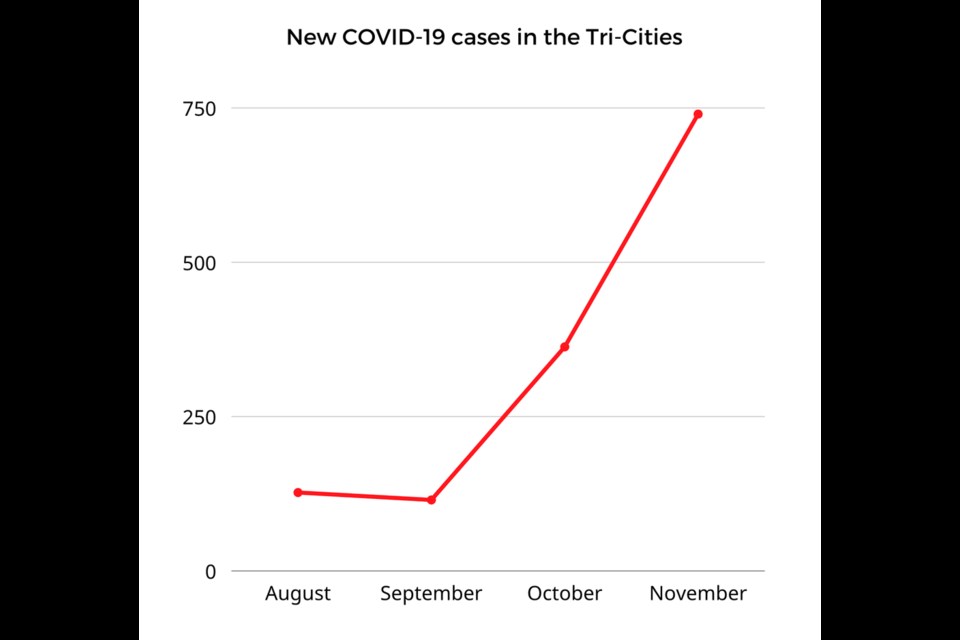The Tri-Cities saw an exponential growth of new COVID-19 cases in November, with new cases more than doubling October’s count, according to newly released data from the BC Centre for Disease Control.
November’s 740 new cases represent a staggering jump from the 363 new cases reported in October. The region — which includes Coquitlam, Port Coquitlam, Port Moody, Anmore and Belcarra — has now recorded 1,523 cases since January.
Despite the rapid growth in new cases, the Tri-Cities has fared better of late than some of its neighbours. As of Nov. 30, Burnaby and New Westminster reported slightly higher per capita rates of COVID-19 than the Tri-Cities, whereas South Vancouver, Delta, Abbotsford and Surrey outpace the rest of the region on a per capita basis.
Across the Fraser Health region — which remains the epicentre of the virus in B.C. — Surrey has reported the most coronavirus cases, with 10,479 since January. It’s followed by Burnaby (1,938 cases), Abbotsford (1,837 cases), the Tri-Cities (1,523 cases), Delta (1,331 cases), Langley (1,312), New Westminster (624 cases), Maple Ridge/Pitt Meadows (596 cases) and Mission (396 cases).
Cases are generally reported based on a person’s place of residence. When cases are from out of province or are linked to an "unknown residence" they are not mapped, according to the BCCDC.
The province does not publicly report coronavirus cases at the municipal level in real-time. However, restrictions put in place across the health authority starting Nov. 19 — and later extended and deepened across the province — do appear to have levelled off the rate of exponential growth across large parts of the Lower Mainland.
Death rates, meanwhile, have continued to climb as high caseloads eventually lead to more hospitalizations: on Thursday, health officials reported 28 people had succumbed to the virus across the province, making Dec. 10 B.C.'s deadliest day as a result of the virus since the pandemic began.



